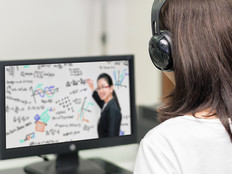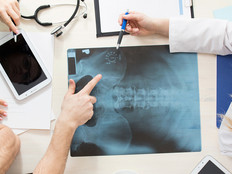Inside the University of Maryland Dental School’s Video Lecture Program
There is an easy way to attract students to your program: Don’t make them go to class.
For nearly a decade, the University of Maryland School of Dentistry has captured all of our faculty’s lectures on video and has made them available to students 24 hours a day via an online portal.
Students can watch and rewatch the content when needed, allowing them to learn at their own pace and create a schedule that adjusts to the demands of their busy lifestyles. In a recent survey of students, 92 percent told us they liked the fact that there was no attendance requirement for such classes, while 96 percent said the video content made it easier to learn the material.
Our Setup
Each of the dental school’s lecture halls is equipped with three-chip cameras in the front and back of the room. Each room also has a smart podium that includes tablet controls and a headset microphone, along with annotation features to highlight specific items in the course material.
Students can attend classes in person (which is mandatory when a guest speaker is lecturing), stream lectures live from an Internet-connected computer or simply watch a lecture at a later time.
Our research has found that most students watch the videos a few days after the lecture occurs. Although the times vary, lectures are viewed primarily during evening hours. We’ve also found that offering video lectures helps to recruit students to our program (69 percent of students said the option attracted them to the school) and helps to retain them once they’re enrolled. In total, our videos have been viewed nearly 1 million times.
Our lecturers also leave an indelible impression on our students’ coursework: Ninety-four percent expressed interest in retaining access to the videos and materials after graduation, to refresh themselves on specific content and lessons as needed and to stay connected to the school.
With in-state tuition costing more than $100,000 over the four years leading to a DDS degree, keeping students in the program and providing them with the tools they need to succeed is crucial to our success.
How We Do It
On the first day a student is officially enrolled in the dental school, he or she receives access to our entire library of captured lectures, from introductory science classes to more complex classes offered typically to second-, third- and fourth-year dental students.
The library includes four years’ worth of lectures, although we find that most students will search out the most recent lecture on a topic when reviewing material. By allowing students access to the videos at any time, they are empowered to take greater control of their educational experience.
Percentage of University of Maryland School of Dentistry students who said a flipped classroom video lecture option attracted them to the school
Students who have young children can watch lectures after their children go to bed. Early risers can review a video at 6 a.m. Students who are studying for a test can focus on one class until the exam, then catch up on missed classes in other subjects. The added options provide students with a schedule that works for them.
Reviewing Work
It is naive to think that students will retain everything they need to know from listening to a lecture just once. Offered the ability to replay the lessons, students gain a better understanding of the material and can review portions that they missed or did not fully understand the first time around. This is particularly helpful for students who need special accommodations or for whom English is a second language.
Our curriculum includes a large number of medical and pharmaceutical terms that can be complex and difficult to understand. The ability to review lectures, many times over, is crucial to understanding.
Helping Professors
Students are not the only beneficiaries of our video program. Professors who find they cannot teach a certain day’s class in person can record the lecture and post it online for students to watch when they are ready.
Professors can also review the footage themselves to see where they might improve in their delivery, or determine whether they are missing a crucial part of the lesson.
Practice, Practice, Practice
The road to becoming a dentist, of course, must include hands-on education as well. Our students take lessons in a facility that simulates what the practice of dentistry will be like once they begin their general practice work.
Lab lecturers can record demonstrations of their classwork and have it played at each student’s station. The professor can then walk through the class, providing more detailed instruction or fixing student mistakes.
Putting It All in Place
Perhaps the greatest hurdle for us was setting an attendance policy in which class attendance was not mandatory. At first, we had no such policy, which led to confusion for both the students and the professors as to what was acceptable.
It’s also important to communicate the value of any video program to staff, who are likely accustomed to teaching a roomful of students and may be shocked at first to deliver a lecture before just a handful. Promoting the benefits to them is key to starting a great video lecture capture program.








